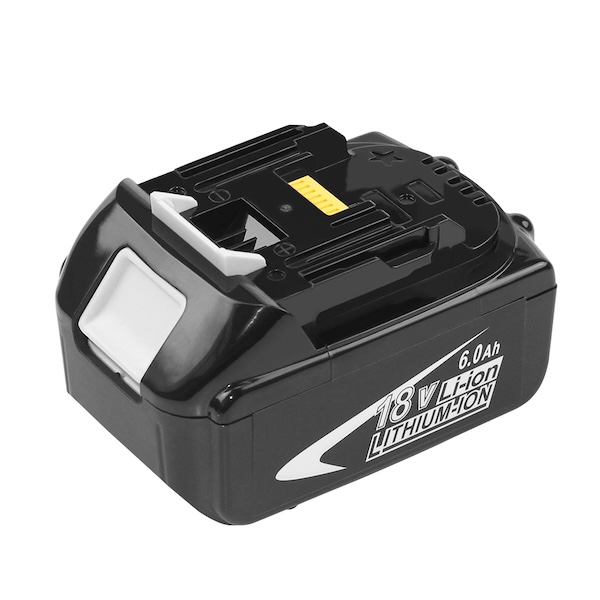
- Products
- Solutions
- Customization
- About
- Resources
- Contact
- Request A Quote
Lithium-ion batteries have become the standard power source for everything from smartphones and laptops to electric vehicles and industrial tools. While these batteries are known for their long lifespan, efficiency, and rechargeability, they are not immune to degradation. Over time, performance declines and safety risks can increase if a battery starts to fail. Recognizing the early signs of battery deterioration is essential to maintain safety and ensure the reliability of your equipment.
Before identifying battery issues, it’s important to understand the main types of lithium-ion batteries. Each chemistry offers different characteristics and lifespan expectations.
Lithium Cobalt Oxide (LCO) batteries are widely used in portable electronics like smartphones and laptops. They typically last 2–3 years, offering high energy density but limited durability.
Lithium Manganese Oxide (LMO) batteries are commonly found in medical devices and power tools. Their 10–20-year lifespan makes them suitable for long-term use under stable conditions.
Lithium Iron Phosphate (LFP) batteries are preferred for electric motorcycles and energy storage systems because of their high thermal stability and over 12-year service life.
Nickel-based lithium batteries, such as NMC (Nickel Manganese Cobalt Oxide) and NCA (Nickel Cobalt Aluminum Oxide), are used in electric vehicles and offer 5–10 years of reliable performance.
Finally, Lithium Titanate (LTO) batteries are designed for demanding applications like electric buses and solar systems, often lasting 30 years or more due to their superior cycle life.
Understanding which type of battery you’re using can help you determine how long it should last and what kind of performance decline is normal.

Even though lithium-ion batteries are equipped with a Battery Management System (BMS) to regulate voltage, temperature, and current, several internal and external factors can still cause premature failure.
Internally, issues may arise from manufacturing defects, such as the use of substandard materials, contamination during assembly, or poor electrode bonding. These defects can lead to uneven current distribution or short circuits inside the cell.
Externally, temperature fluctuations, humidity, physical impacts, and improper charging practices also accelerate battery degradation. For example, exposing a battery to extreme heat can trigger chemical breakdown inside the cells, while cold temperatures may reduce efficiency and increase internal resistance.
Understanding these causes helps users take preventive actions to prolong battery health.
Identifying the symptoms of a deteriorating battery early on can prevent potential hazards such as overheating or leakage. Here are the most common warning signs:
If you notice any of these signs, stop using the battery immediately and proceed with a proper inspection.
Testing helps confirm whether a battery is truly failing or just underperforming temporarily. The most basic way to check is by using a multimeter to measure voltage.
To perform the test, turn on the multimeter and set it to DC voltage mode. Connect the red probe to the positive terminal and the black probe to the negative terminal of the battery. A healthy 3.7V lithium-ion cell should show a voltage reading between 3.6V and 4.2V. If the voltage drops below 3.0V, the battery may be deeply discharged or damaged.
For more precise evaluation, use a lithium battery capacity tester, which measures discharge rate, capacity, and internal resistance. This tool is especially useful for professional users who need accurate data for battery pack maintenance or replacement planning.
Proper care significantly prolongs the lifespan of lithium-ion batteries and reduces the risk of failure. Here are some key practices:
Following these guidelines helps reduce replacement costs and improves safety across all applications.

In addition to proper charging and storage, maintaining regular use and stable charge levels keeps lithium-ion batteries in optimal condition. Batteries left unused for long periods can self-discharge and fall below safe voltage levels. For long-term storage, maintain a 50–60% charge and inspect batteries periodically.
Avoid exposing batteries to extreme heat or freezing conditions, as temperature extremes are among the top causes of capacity loss and internal damage.
By maintaining stable environmental conditions and using reliable chargers, businesses and professionals can greatly extend the operational lifespan of their lithium-ion power systems.
Lithium-ion batteries have revolutionized how industries and individuals power devices, tools, and vehicles. Yet even the best batteries will eventually degrade. By learning how to identify signs of wear, test voltage and capacity accurately, and adopt best maintenance practices, users can ensure both safety and long-term performance.
If your lithium-ion batteries show symptoms of failure or you’re looking for reliable replacements, consider RHY Battery — a trusted supplier known for high-performance lithium battery packs, dependable quality control, and safety-focused design. RHY Battery provides professional battery solutions to help your business operate efficiently and safely.